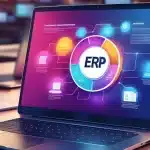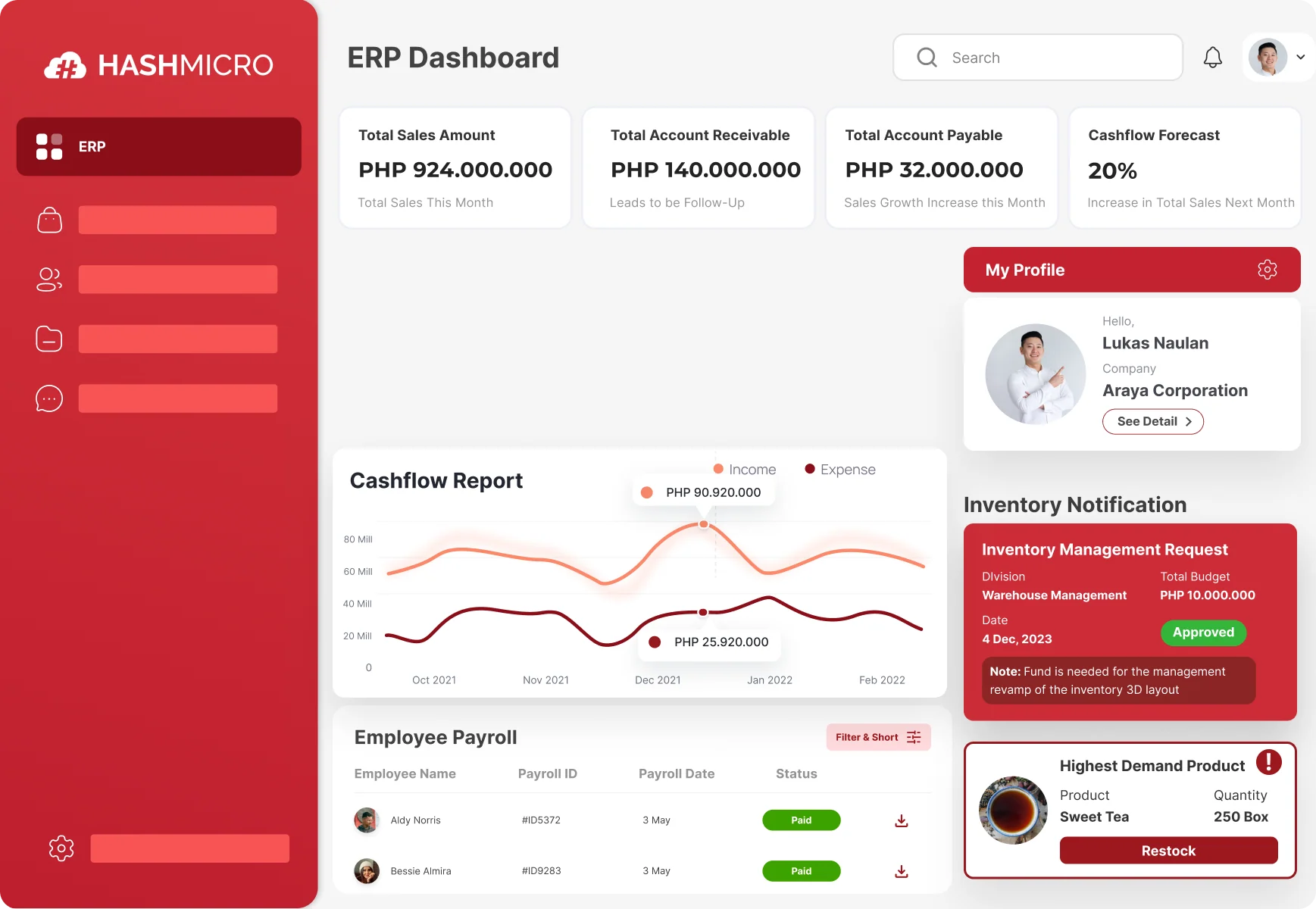We live in a time where efficiency is crucial for success, especially in a country like the Philippines with its fast-changing business environment. Many companies are actively seeking the best ways to improve their productivity. One effective method is the strategic use of Information Technology (IT).
You might be asking, why is this important? The options range from modern cloud services to on-site data centers, including SaaS ERP systems. Your choices can shape your company’s future, which can feel overwhelming.
It’s natural to feel uncertain and worried about making the wrong choice. After all, everyone wants what’s best for their business, right? But don’t worry—we’re here to help.
Sama-sama nating gawin ang paglalakbay na ito at hanapin ang pinakamahusay na solusyon para sa iyong mga pangangailangan!
Table of Contents
Key Takeaways
|

What is SaaS?
SaaS, or Software as a Service, is a way to deliver software over the Internet. Instead of installing software on your computer, it is hosted on a remote server managed by the SaaS provider.
This approach helps companies use ERP analytics software without worrying about managing complex IT systems. It reduces the internal workload for software maintenance and updates and eliminates the need to buy servers and hardware.
SaaS is popular among many types of companies in the Philippines, from small startups to large enterprises. It’s great for financial management, human resources, and collaboration applications.
With SaaS, businesses can access the tools they need more easily and efficiently, adapting to their changing needs.
What is SaaS ERP?
SaaS ERP software is a cloud-based solution that allows businesses to use Enterprise Resource Planning software without managing their hardware or servers.
With SaaS ERP, companies pay a subscription fee instead of buying software licenses outright. This subscription model means businesses can use the software for regular payment, whether monthly or annually.
SaaS ERP examples include platforms like HashMicro, NetSuite, SAP Business ByDesign, and Odoo. These solutions simplify the implementation process and reduce costs, making them particularly helpful for small and medium-sized enterprises.
SaaS ERP is especially popular among small businesses and is suitable for larger companies. Many organizations in the Philippines use this model to streamline their operations.
Advantages and Disadvantages of SaaS ERP
There are strong reasons why SaaS and ERP subscriptions are leading trends in today’s IT development. Here are the advantages of SaaS ERP:
- Accessibility: Cloud-based solutions allow users to access services from anywhere with internet access, promoting flexibility and remote work.
- Reduced Development Needs: Companies can benefit from SaaS services without requiring extensive in-house development, allowing them to focus on their core operations.
- Guaranteed Reliability: Service providers ensure application availability and reliability, alleviating user concerns and enabling them to concentrate on their data.
- Cost Savings: SaaS ERP helps reduce operational expenses, including maintenance and network repairs, as the service provider manages these responsibilities.
- Flexibility in Technology Selection: Organizations can easily choose applications that meet their needs and discontinue those no longer necessary, allowing for a more tailored technology approach.
Although there are many benefits to using this service, you may also face some drawbacks with SaaS that may not suit your business requirements. Here are the disadvantages of SaaS ERP presented in point format:
- Limited Customization: SaaS ERP systems are often designed to meet business needs, which can limit the ability to customize them to specific business requirements. This can make it challenging for companies to tailor the system to their unique business processes. That’s why they are often a better fit for small to medium-sized businesses.
- Dependence on the Vendor: Companies using SaaS ERP highly depend on the vendor for maintenance, security, and software updates. This can raise concerns about control and flexibility.
- Data Security Concerns: Although SaaS ERP vendors typically offer strong security measures, some companies may have concerns about storing data off-site and the potential for data breaches.
Steps to Choose the Right ERP System for Your Business
You have already discovered cloud ERP systems and their benefits, types, advantages, and disadvantages. However, each company’s requirements for an ERP solution differ depending on its specific business type and industry.
Thus, a company must choose an ERP solution that fits its needs. Investing time to identify the right ERP system is important, as this software may be used for the next 10 to 15 years. Here are some suggestions to keep in mind when assessing an ERP for your organization:
- Assess Current Challenges: Understand the difficulties and weaknesses of your existing system across all departments. Involving the IT team in this assessment is vital to identify any issues. This analysis will help you determine which aspects of your business can be improved through different ERP modules.
- Choose a Reputable Partner: Selecting a partner with a strong, credible reputation is important. A reliable partner will help you maximize the benefits of ERP for your business processes. Look for SaaS developers from a reputable company that can meet your expectations.
- Prioritize User-Friendliness: Ensure that the ERP software you choose is accessible and user-friendly so all employees can easily adapt.
- Consider Cost Factors: To ensure smooth ERP operation, investigate the necessary hardware and networking equipment costs. Pricing models can vary significantly, so it’s important to compare quotes to find the best deal.
Are you looking for ERP software Philippines for your business? Using Hashmicro ERP can help streamline your operations.
Interesado sa mga natatanging tampok na ibinibigay namin? Huwag mag-atubiling makipag-ugnayan sa amin!
HashMicro ERP – Ideal SaaS Alternative for Your Business
Hash Core is a leading ERP developed by HashMicro, a well-known ERP provider based in Singapore. It is designed specifically to help small and medium-sized enterprises grow through business process automation.
A key feature of Hash Core is its modular design, which lets users choose specific modules to fit their needs. The ERP module options include accounting, CRM, procurement, inventory management, and POS systems for retail and restaurants.
HashMicro emphasizes accessibility and user experience, catering to diverse client needs across various industries. Its dedicated team of experts is ready to assist with inquiries and support.

Conclusion
SaaS and SaaS ERP subscriptions can be highly advantageous in various scenarios. Many business activities benefit from the flexibility and efficiency that SaaS services offer.
With cloud-based solutions, there’s no need to constantly monitor hardware or install specialized software—just access the services anytime with an internet connection.
Have you looked into an ERP system? HashMicro is a trusted SaaS application provider offering top-tier HashMicro ERP systems in the Philippines that meet international standards and can help elevate your business.
Makipag-ugnayan sa amin upang subukan ang isang libreng demo ng aming mga tampok ng ERP!

FAQ
-
What is SaaS ERP?
SaaS ERP (Software as a Service Enterprise Resource Planning) is a cloud-based software solution that helps businesses manage their core operations, such as finance, HR, and supply chain, through a subscription model.
-
What are SaaS and ERP?
SaaS (Software as a Service) refers to software that is delivered online via a subscription, while ERP (Enterprise Resource Planning) is a type of software that integrates various business processes and functions into a unified system.
-
What does ERP mean?
ERP (Enterprise Resource Planning) is a software platform that centralizes and streamlines an organization’s data and processes to improve efficiency and decision-making.

























